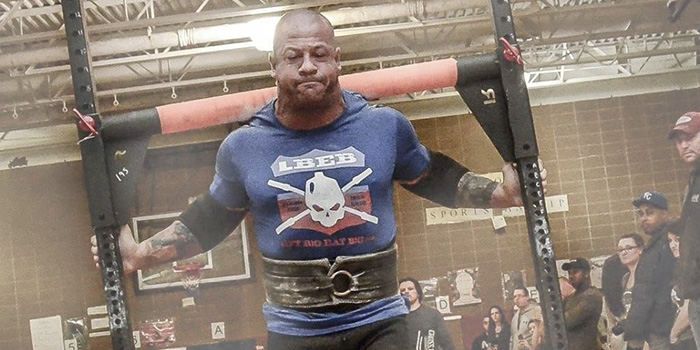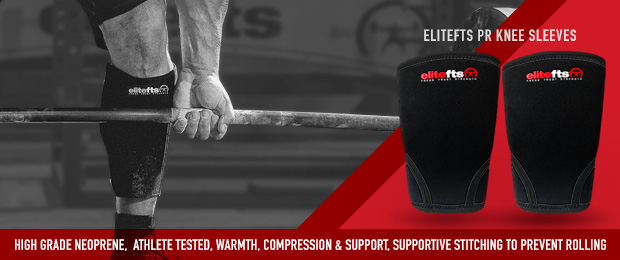
Strongman is a sport that can take a great toll on the body. When I first started competing, all I had were a cheap Velcro belt, a pair of Chucks, and Normal Wrist Wraps. As I competed more in both the sports of powerlifting and strongman, my gear collection grew quite a bit. I’m sure most of you reading this that have been around a while have a gym bag full of all kinds of different wrist wraps, belts, etc.
Now, one thing in the sport of strongman is that you can wear whatever supportive gear you want for the most part. The exception is the deadlift, where it is specified in the rules whether or not a suit is allowed.
RECENT: Romanian Deadlift Variations for Stronger Hamstrings
I have always told anyone competing that they should wear any supportive gear that is within the rules. Strongman is a brutal sport that will beat your joints up, so you might as well take all the precautions that you can. Knee sleeves and elbows sleeves are musts, in my opinion. The next time you are at a strongman competition, check out the master's division. I guarantee they are covered from head to toe with neoprene to keep their joints warm and supported.
One thing we don’t see a lot of is the use of knee wraps in the sport of strongman, unless it is for the squat, which is rarely seen in local competitions. However, it’s something I have experimented with and also discussed with competitors who I have seen use them.
Personally, I experience a lot of knee pain during the pressing events. When I was a beginner, I made the mistake of always pushing my knees forward on the dip when using my legs on the press. This is still the most common mistake I see today while pressing, especially on a log. Even with proper technique, pressing in strongman puts a lot of stress on the knees. No matter which way you press, push press, or split jerk with the repetitive double knee bend, it’s most likely you will have some sore knees in your career.
First, I have to say you need to press with proper technique. As you dip, drive your knees out hard, and your hips should sit back. Take a video yourself from the side to check your form so you can address any issues. If your knees travel forward first, you are going to run into trouble if you haven’t already. Not only are you putting stress on the knees, but you also aren’t being as powerful as you could be. Your hips are much stronger, so you need to get them working. Many Olympic lifters use a light knee wrap for this reason. They have to dip to a very low squat, of course, but the leg drive on the press can benefit from wraps as well.
Here’s Olympic weightlifter-turned-strongman Nick Saccente performing a perfect split jerk on the log:
Nick Cambi, a professional 105k strongman, uses knee wraps while doing log clean and press for reps:
Another event you can wear knee wraps for is a moving event. Now I would only recommend using them on the heaviest ones for short distance. Do not wear them on max distance events; your hamstrings will fatigue very fast. For max distance events, make sure you are not wearing a tight knee sleeve — only a very light one if at all.
However, for a heavy yoke, if you are having knee issues, especially on the pick, which is common, give knee wraps a try. Knee wraps can give you more stability as you move, which will allow you to move faster.
Here’s World’s Strongest Man competitor Robert Oberst using knee wraps for some heavy yoke:
I like to warm up for yoke in just my knee sleeves like normal, but when I get to a heavy set, I’ll put a light wrap over my knee sleeves. Some of you may think this is too much, but when I have to move as fast as possible with 900-plus pounds on your back, I will use everything I can.
Wearing the wraps over the knee sleeves makes wearing the wraps more comfortable. Again, I have to stress that you should only wear a light pair so you don’t lose feeling during the event. You can also experiment with using them for farmers, but I mainly stick with them for pressing events and heavy yoke.











1 Comment